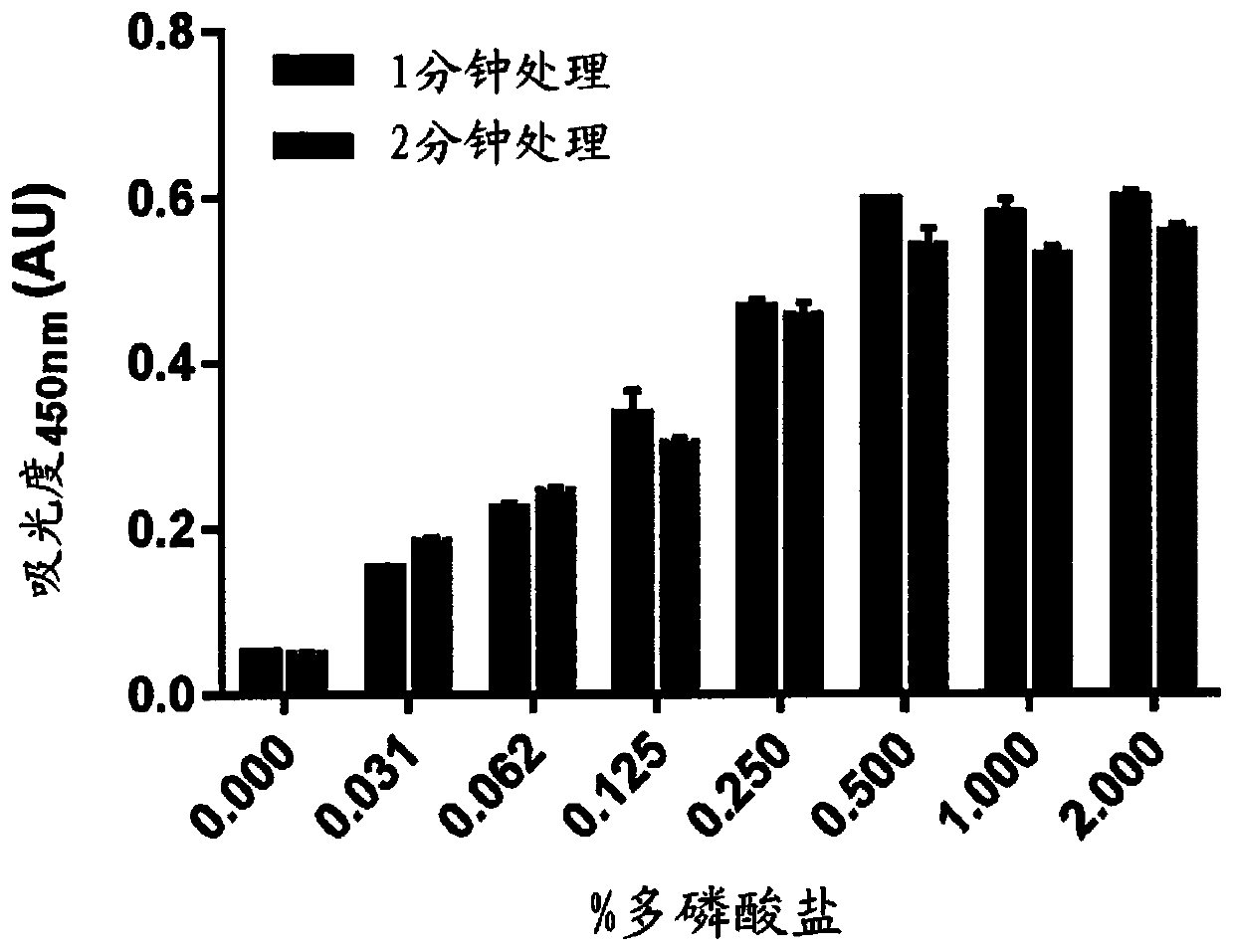High-throughput method for detecting tooth stain prevention and removal
一种牙渍、污渍的技术,应用在高效测定法领域
- Summary
- Abstract
- Description
- Claims
- Application Information
AI Technical Summary
Problems solved by technology
Method used
Image
Examples
Embodiment 1
[0033] Embodiment 1: decontamination effect test
[0034] The following general process is used and described in more detail below:
[0035] Decontamination effect test process :
[0036] 1. Formation of a surface coat on hydroxyapatite (HAp) particles by mixing the particles with saliva and incubating the mixture.
[0037] 2. Transfer the HAp particle / saliva suspension to the bulk filter vessel.
[0038] 3. The saliva supernatant was filtered and discarded.
[0039] 4. Obtain stain particles by adding the stain solution directly to the filter vessel and incubating.
[0040] 5. Transfer the membrane-coated fouling HAp particle suspension to the filter vessel.
[0041] 6. Discard the supernatant by filtering out the membrane-coated contaminating HAp particles.
[0042] 7. Resuspend the membrane-coated fouling HAp particles in water and optionally store for future testing.
[0043] 8. Preparation of membrane-coated fouling HAp particles for processing.
[0044] 9. Dis...
Embodiment 2
[0049] Embodiment 2: antifouling test
[0050] The following general process is used and described in more detail below:
[0051] Anti-fouling test process :
[0052] 1. Formation of a surface coat on hydroxyapatite (HAp) particles by mixing the particles with saliva and incubating the mixture.
[0053] 2. Transfer the HAp particle / saliva suspension to the bulk filter vessel.
[0054] 3. The saliva supernatant was filtered and discarded.
[0055] 4. Discard the supernatant by processing the membrane-coated HAp particles.
[0056] 5. Discard the supernatant by filtering the treated membrane-coated HAp particles.
[0057] 6. Stain the membrane-coated pretreated HAp particles by adding the stain solution directly to the filter vessel and incubating.
[0058] 7. Wash any loosely attached stains off the pellicle-coated pretreated HAp particles.
[0059] 8. Use 5% PPi solution to elute the stain on the membrane-coated pre-stained HAp particles.
[0060] 9. Filter and coll...
PUM
 Login to view more
Login to view more Abstract
Description
Claims
Application Information
 Login to view more
Login to view more - R&D Engineer
- R&D Manager
- IP Professional
- Industry Leading Data Capabilities
- Powerful AI technology
- Patent DNA Extraction
Browse by: Latest US Patents, China's latest patents, Technical Efficacy Thesaurus, Application Domain, Technology Topic.
© 2024 PatSnap. All rights reserved.Legal|Privacy policy|Modern Slavery Act Transparency Statement|Sitemap


